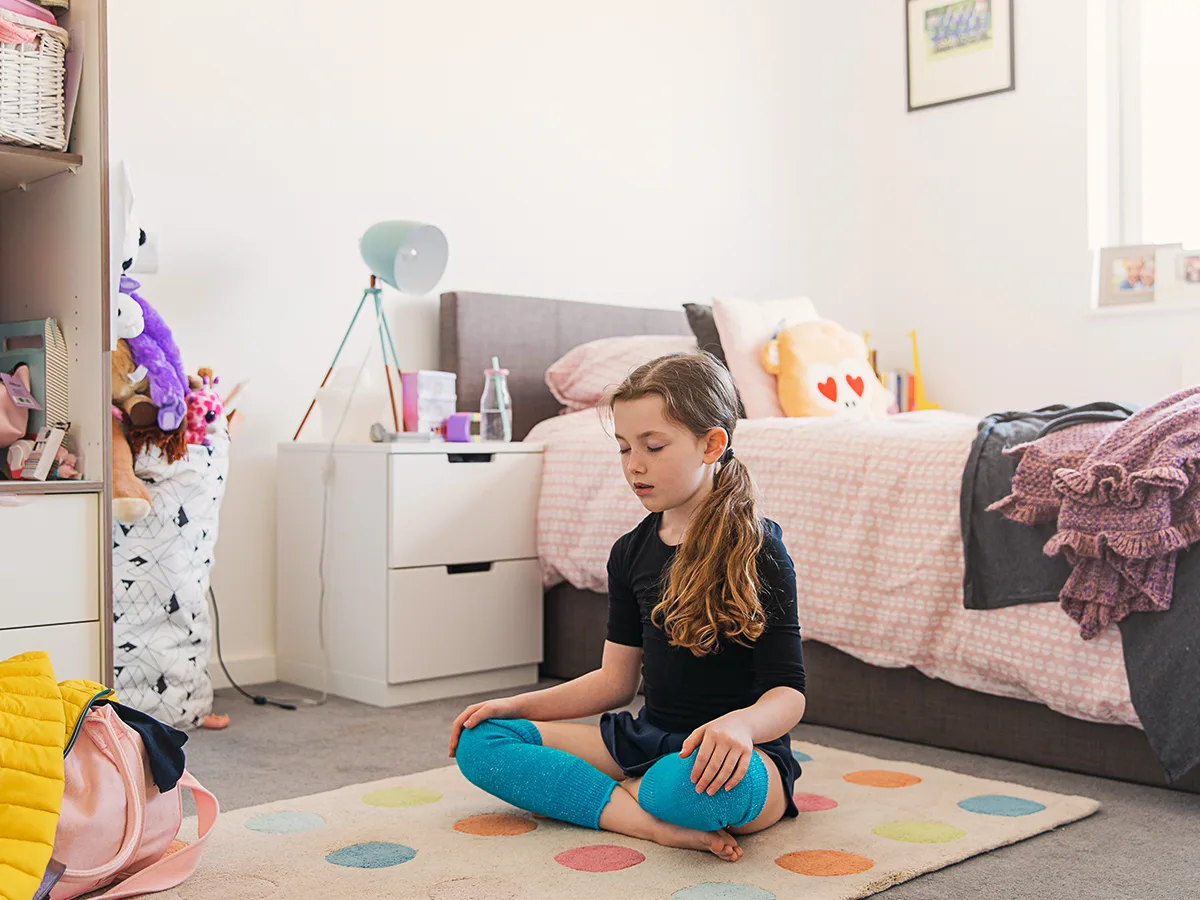Self-care for kids: 6 ways to self-regulate

Self-care isn’t something most kids think about. But just like the adults in their lives, kids can get stressed. They don’t always have strategies to help them self-regulate.
Self-regulation is about having ways to calm down in the face of stress and anxiety. It’s a skill that develops over time and with practice. And being able to soothe yourself is an important step to being more resilient.
Here are six activities kids can use to self-regulate (without needing adults to do it with them or for them).
1. Focus with the 5-4-3-2-1 method.
This mindfulness technique helps you focus more on what’s happening around you and less on any anxious thoughts you may be having.
To use the 5-4-3-2-1 method, take a deep breath and focus on what’s around you. Notice and name:
5 things you can see, like a desk or a clock or a water stain on the ceiling. It doesn’t matter how large or small.
4 things you can feel or touch, like the pencil you’re holding, your shirt, or even the ground under your feet.
3 things you can hear, like the tick of the clock, the buzz of an overhead light, or the sound of your own breathing.
2 things you can smell. You could sniff your hands for a whiff of soap or hand sanitizer.
1 thing you can taste. It’s not always easy to find a pleasant taste, but even a sip of water has a taste to it.
5-4-3-2-1 mindfulness methodPDF - 45.3 KB
2. Use starfish breathing.
The goal of this activity is to slow down your thoughts by focusing on breathing and touch. Starfish or belly breathing allows you to notice and name feelings before reacting to them.
Here’s how to starfish breathe:
Hold out one hand with your fingers spread wide, like a starfish.
With the other hand, use your index (pointer) finger to trace the “starfish” around the fingers.
Start at the wrist and breathe in while slowly tracing from the outside of your thumb to the top of your thumb.
Inhale through your nose for the whole upward tracing movement.
Then breathe out through your mouth while tracing down toward the inside of the thumb.
Continue breathing and tracing the
whole starfish.
If you’re sensitive to touch or find it hard to starfish breathe for some other reason, try belly breathing instead.
Here’s how to belly breathe:
Lie on your back on the floor and put your hand on your belly.
Breathe in through your nose for three seconds (“one hippopotamus, two hippopotamus, three hippopotamus”) and feel your hand rise.
Then breathe out through your mouth for three seconds and feel your hand fall.
Repeat four times.
3. Repeat an affirmation.
An affirmation is an empowering statement that you can repeat to yourself in times of stress. It might be “I can only do my best” or “I know I can do this.” Or it could be something more personal.
You can ask family members and other adults to help you come up with the best message if you can’t think of one. Once you have your affirmation, it helps to write it down and keep it somewhere visible to remember it.
4. Take a walk to get some air.
Moving around can help with self-regulation. Exercise increases blood flow to the brain, which makes it easier to think clearly. The fresh air on an outdoor walk is great, but even walking indoors can help.
To really calm down, try combining a short walk with starfish breathing.
5. Rock (or roll).
If you’re experiencing strong emotions or sensory overload, rocking or swaying can help calm your nervous system. Here are some ways to do this:
Rock in a rocking chair or swivel in a swivel chair.
Lie stomach down on an exercise ball and roll back and forth.
Sway back and forth to soft music.
6. Put emotions into words or art.
Journaling, drawing, or even talking out loud to yourself can help you self-regulate. To help get started, use “draw what you see in your head” as a prompt.
Seeing or hearing what’s on your mind can help you step back from what you’re worried about. It can help you separate facts from emotions and reflect on how to handle a problem. Sometimes, it’s less about figuring out a solution and more about understanding what seems so hard or overwhelming.
Dive deeper
Sometimes the right strategy for self-regulation is to let emotions out, like by pounding or screaming into a pillow. But it takes emotional intelligence to know when it’s socially appropriate to let emotions loose and when it’s better to manage them with a strategy.
Get tips for building emotional intelligence in kids.
Explore ways to help kids develop resilience.
Learn why some kids have trouble managing emotions.



